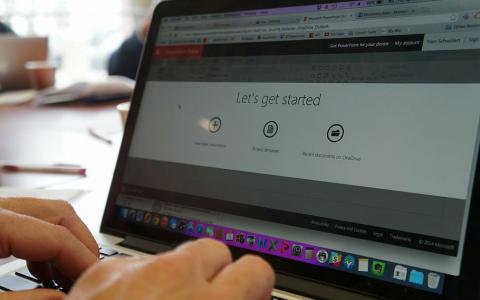
(AssetMark) For financial advisors, change is to be expected. Much of our work centers on responding to change—market fluctuations, ensuring positive change in clients’ lives, harnessing the power of growth, and more. But technological change isn’t something that most financial advisors are equipped to manage.
As the industry becomes increasingly powered by digital systems and tools, financial advisors will have to adjust in order to provide continued value for their clients. In particular, financial advisors must offer a superior experience to self-service asset management software solutions, such as Robinhood or Betterment, in order to attract clients who may not understand the benefit of a real, live financial advisor.
Addressing unique client goals, teaching an investors’ mindset, soothing short-term fears, offering insightful and innovative approaches to investing, rapidly adjusting based on sudden changes in the clients’ life or market conditions—it’s going to be a long time before technology and machines are able to outperform or equal the soft skills that human advisors bring in these arenas. However, financial advisors still need to adapt to the new digital solutions that have permeated the industry.
How Are Advisors Responding?
We’ve seen advisors make two common mistakes when adapting to technological change in the modern financial services industry: They either ignore it entirely or embrace it in an improvisational, ad hoc fashion.
Business as Usual
For advisors that don’t see the need to adapt, email often serves as their customer relationship management (CRM) software, and notepads serve as an asset management software. They believe that their greatest value is their personal relationship with their clients, something that self-service asset management software can’t replicate.
But this limits their ability to serve a wider client base and hurts the client experience.
Just because a living, breathing financial advisor has more to offer than robo-advisors of the world doesn’t mean that technology has nothing to add. And without offering the kind of digital experiences that modern clients expect and see in nearly every aspect of their lives—whether that’s banking, job hunting, enjoying music and tv, or any other pursuit—these advisors are going to miss out on potential clients. They’re going to choose either a self-service platform, which will offer a sleeker user experience, or choose a financial advisor that has made more of an investment into technology.
This leads us to the second major mistake financial advisors make when adjusting to the modern financial services industry.
Ad Hoc Adoption
On the opposite end of the spectrum, we see advisors adopting technology for a multitude of needs in their practice without giving thought to how it all fits together in a strategic, client-centric way.
Consider all the pieces and parts of a full asset management software stack. A financial advisor might rely on:
- A CRM system, such as Redtail or Salesforce
- A financial planning system, such as MoneyGuide or eMoney
- Potentially an additional risk attribution system like Riskalyze or a portfolio analysis system like Morningstar
- A trading system, such as Orion
- A back-end system to handle reporting, billing, and account management
With all of these different systems and tools, a financial advisor might be creating more problems than they’re solving.
Any given client account is going to need to be represented on all of these systems, and that data must remain consistent across systems. The choices are to either manually import and export data, checking each time for accuracy and updating every time it changes, or to learn how to integrate all of these disparate systems to ensure account data remains consistent and workable.
Unfortunately, cultivating the necessary IT skills and taking the time to manage data is not possible for many financial advisors—at least, not if they’re also going to spend time with their clients.
How End-to-End Wealth Management Platforms Bring the Focus Back on the Client
In many ways, financial advisors are falling into the same trap as those individuals who believe they can get everything they need from a self-service asset management software—they’re not considering how the service element can improve their experience.
Rather than purchase individual tools to address the different needs in their practice and do all the work of managing those solutions themselves, successful advisors should instead look for two things:
- An end-to-end asset management software that can integrate with any existing or future financial service technologies
- A robust service team that can do the technical work for them and make recommendations for their individual practice’s needs
Adapting to technological change doesn’t mean becoming part–IT expert, part–financial advisor, nor does it mean adopting technology for technology’s sake. Instead, trusted advisors understand that they can provide a higher level of service to their clients by taking a more holistic approach to technology adoption and by outsourcing the work they don’t specialize in to a team that does.
With an end-to-end asset management software solution, advisors can provide the kind of digital experience clients expect and avoid the time lost managing a half-dozen different software tools. Crucially, when that software solution comes wrapped in dedicated technical support, financial advisors also gain expert guidance on implementation and maintenance, ensuring that the technology they adopt actually makes a difference for the client.
If you're interested in exploring the topic further, reach out to our team. We're always happy to talk about how financial technology can elevate the client experience.



